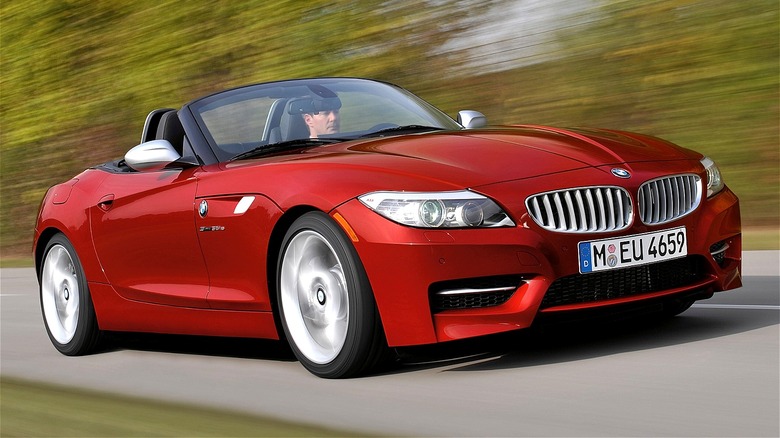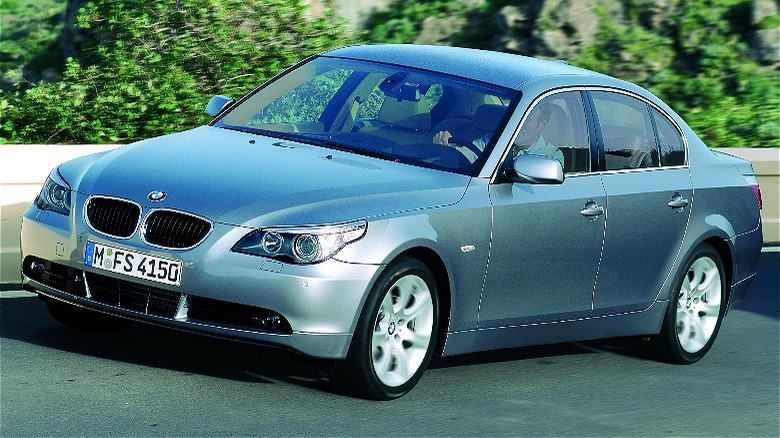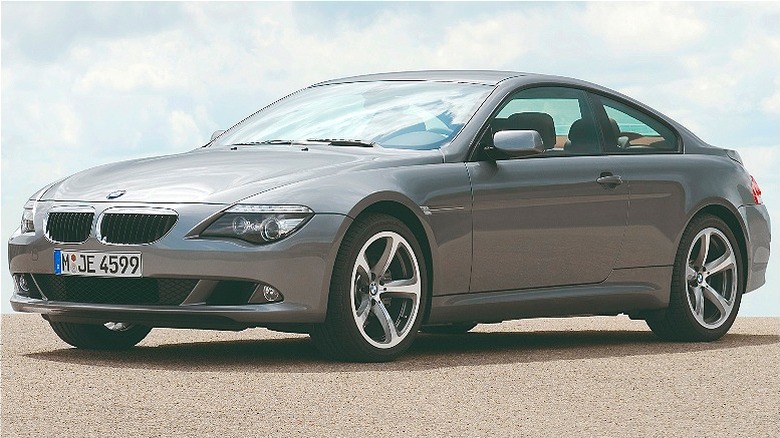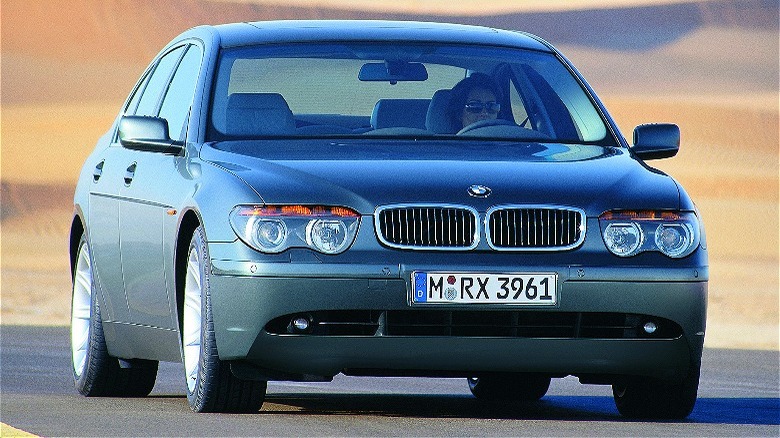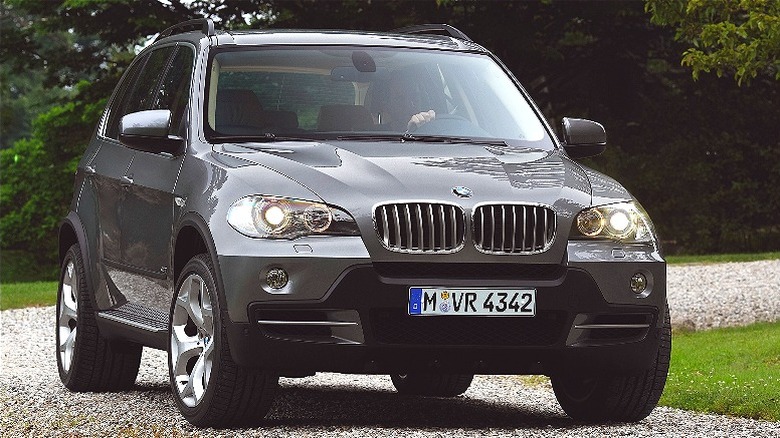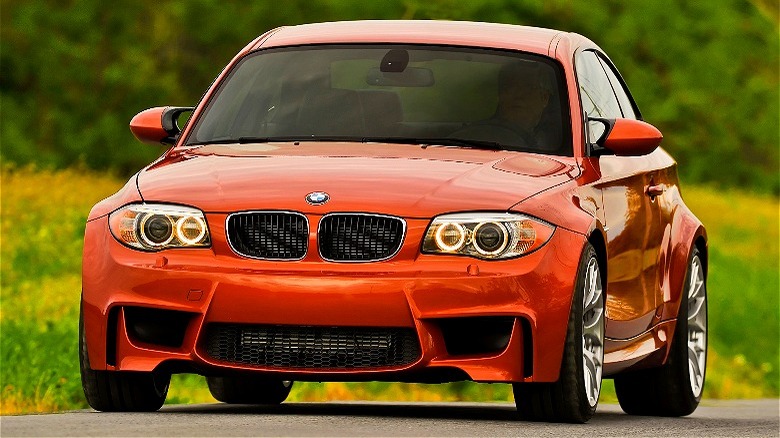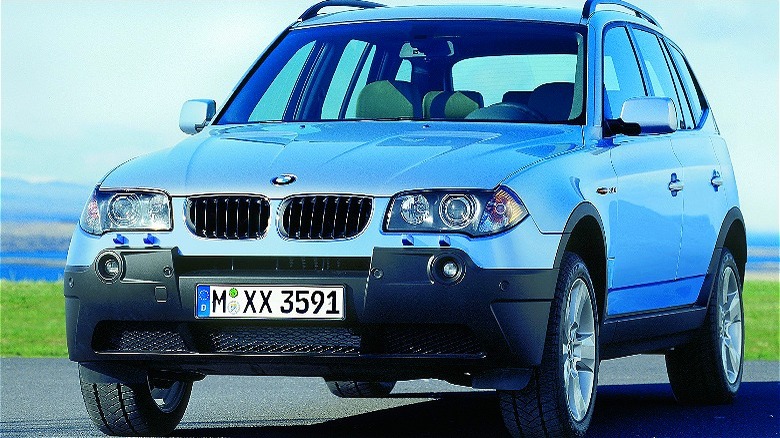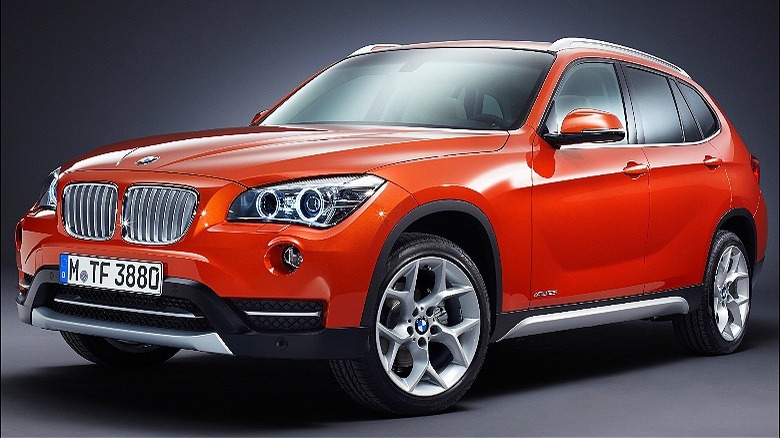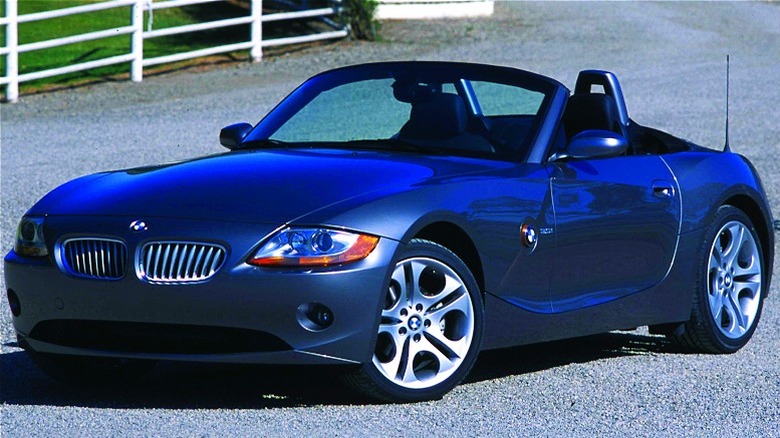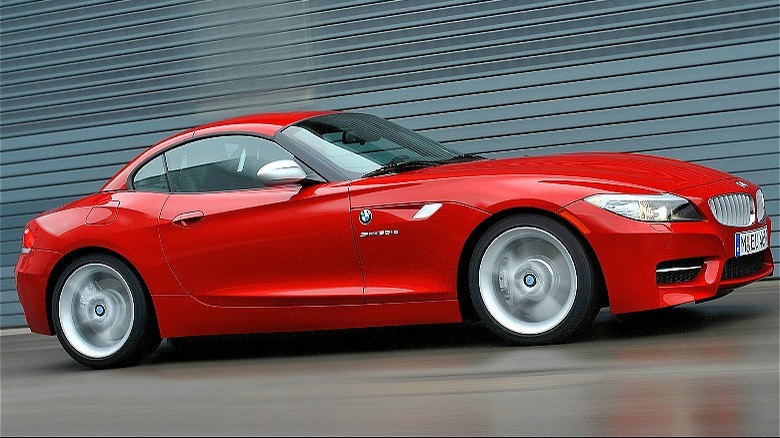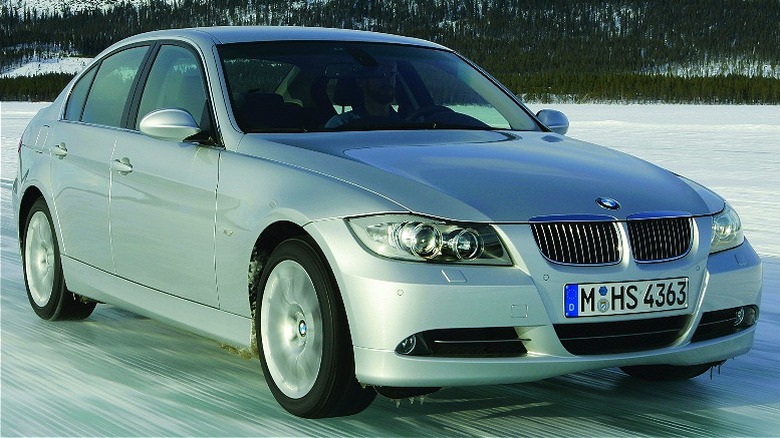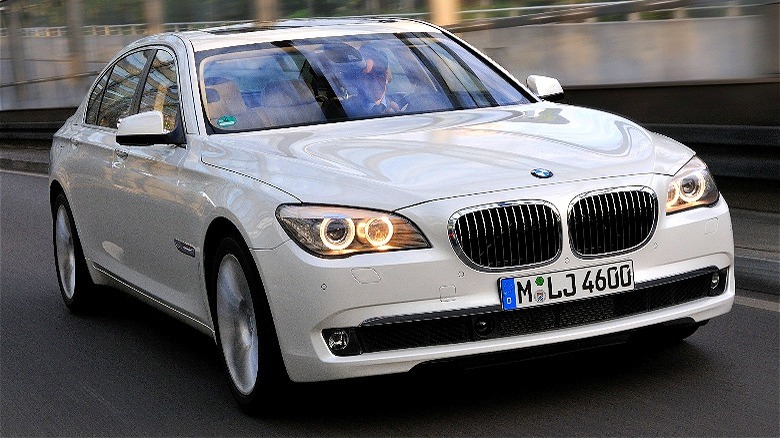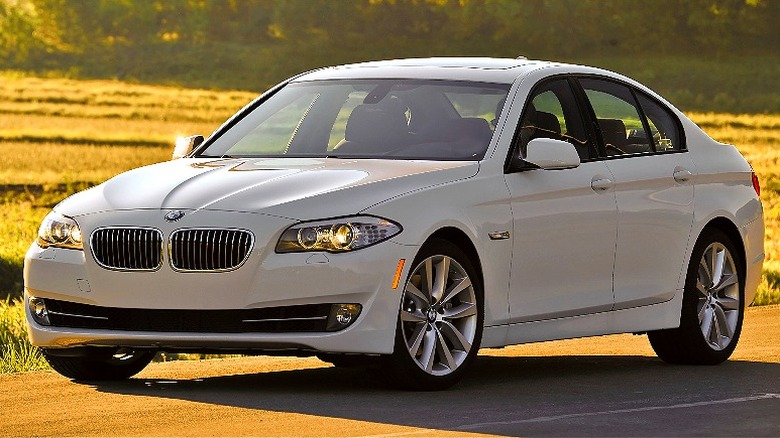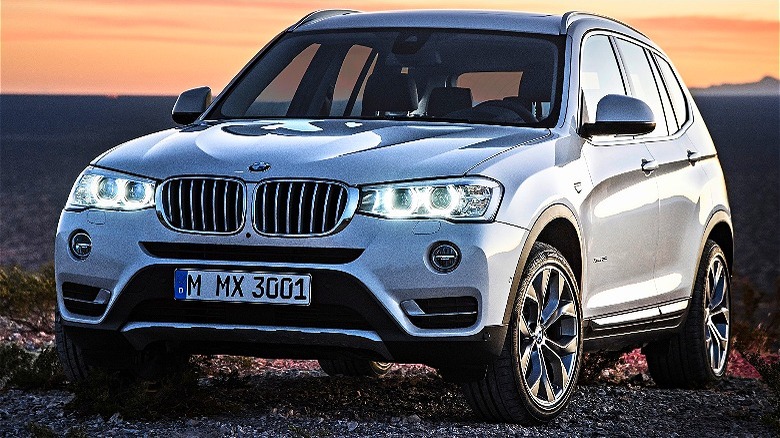Every BMW Model Powered By The N52 Engine
For decades, BMW has been synonymous with powerful and refined inline-six engines. In a world where most six-cylinder engines were V6s, BMW stuck with inline-six engines, offering a perfect blend of smoothness and performance. BMW's N52 was introduced in the 2000s, and it holds a significant place in the straight-six legacy.
This naturally aspirated inline-six gas engine was famous for its smooth power delivery, engaging driving experience, and reliability. It replaced the M54 engine, setting itself apart with impressive fuel efficiency, torque, and horsepower gains. The N52 engine was the first BMW engine with a magnesium-aluminum composite block, helping it reduce weight while boosting its durability.
BMW offered the N52 engine in two displacements: 2.5-liter and 3.0-liter. These powertrains offered a range of outputs depending on the specific model. Below, we look at the models powered by this engine to better understand how it was a remarkable achievement in BMW's automotive engineering.
E60 BMW 5 Series
BMW's fifth-generation 5 Series consisted of the E60 (sedan) and E61 (wagon). When introduced in 2003 for the 2004 model year, the 5 Series got an updated design and a roomier interior. The fifth-gen 5 Series had three models: 525i sedan, 530i sedan, and 545i sedan. The 525i and 530i models used the M54 inline-six engine with 184 horsepower (175 pound-feet) and 225 horsepower (214 pound-feet), respectively. While this was a highly potent powertrain, BMW later introduced the N52 inline-six in the later fifth-generation 5 Series models.
For the 2006 model year, BMW had a larger collection of six-cylinder models: 525i sedan, 530i sedan, 525xi sedan, 530xi sedan, and a new 530xi wagon. These models used the advanced N52 engine, with the 525i and xi models boasting 215 horsepower and 185 pound-feet of torque, while the 530i and xi models had 255 and 220 pound-feet of torque. This lineup had three transmission options: a six-speed Getrag manual in the 525i and 525xi models, a six-speed sequential manual for the 530i only, and a ZF six-speed automatic with selectable Manual and Sport modes. The N52-powered 5 Series lineup was reasonably powerful, making the 530i with the sequential manual transmission the fastest, boasting a zero-to-60-mph run of 6.4 seconds and a 149-mph top speed.
E63 BMW 6 Series
BMW's 6 Series lineup offered luxurious sport coupes and convertibles. The E63 and E64 models were the second-generation models available with inline-six or V8 powertrains. In the United States, the only available models of the E63 and E64 6 Series generation used BMW's mighty 4.4-liter and 4.8-liter V8 engines. The first versions produced 325 horsepower and 330 pound-feet of torque.
By 2010, the 6 Series coupe and convertible models used a 4.8-liter V8 with 360 horespower and 360 pound-feet of torque. This powertrain allowed the 650i coupe to sprint from zero to 60 mph in 5.5 seconds when paired with the manual transmission. In Europe, the base 6 Series models, 630i coupe and convertible, used the new 3.0-liter six-cylinder engine with 255 horsepower and 221 pound-feet of torque. This six-cylinder engine paired with three transmission options: a manual, a sequential manual, and an automatic.
With the manual transmission, the 630i Coupé could sprint from zero to 62 mph in 6.5 seconds and reach a 155-mph top speed. While the N52-powered 6 Series models weren't as potent as the V8 siblings, they were 265 pounds lighter and more efficient. To further differentiate the two models, BMW fitted the inline-six-powered models with smaller front brake discs, chrome-plated exhaust pipes, and 17-inch alloy wheels.
E65 BMW 7 Series
The BMW 7 Series is a full-size luxury family sedan currently in its seventh generation. The E65 and E66 models were part of the fourth generation, and in 2001, there were three trims in the U.S.: 740i, 740iL, and 750iL. The 740i models used a 4.4-liter V8 engine with 282 horsepower and 324 pound-feet of torque. The top trim 750iL model used a 5.4-liter V12 engine with 326 horsepower and 361 pound-feet of torque.
These engines paired with a five-speed ZF automatic transmission, powering the rear wheels. The V8 in the 740i enabled it to dash from zero to 60 mph in 6.9 seconds and reach a 155-limited top speed with the optional Sport package. The V12-powered 750iL had a quicker zero to 60 mph sprint of 6.6 seconds.
In some parts of the world, BMW offered an entry-level 730i and 730Li model with the N52 engine. This version of the N52 engine was a 3.0 liter inline-six producing 256 horsepower and 221 pound-feet of torque. While it wasn't as powerful as the V8- and V12-powered models, the 730i version could scurry from zero to 62 mph in 7.8 seconds and reach a 152-mph top speed.
E70 BMW X5
BMW introduced the E70 X5 in 2007, offering buyers the second-generation model with a new design, uncompromised practicality, and enhanced performance. For the 2007 model year, BMW offered two X5 trims: X5 3.0si and X5 4.8i. The 3.0si was the base version, boasting the N52 engine. This 3.0-liter naturally aspirated inline-sux engine produced 260 horsepower and 225 pound-feet of torque. The 4.8i was the most powerful trim, boasting a 4.8-liter V8 engine with 350 horsepower and 350 pound-feet of torque. Both engines paired with a ZF six-speed automatic transmission, powering all four wheels.
Unlike its predecessor, the second-generation X5 didn't get the six-speed manual transmission. Fortunately, this setup allowed the base version to sprint from zero to 60 mph in 7.8 seconds, while the V8-powered model completed the run in 6.4 seconds. In addition, BMW made more changes to the second-generation X5, including increased interior and exterior dimensions. These increments helped add space, carrying capacity, and overall comfort. They also helped make the X5 one of the best midsize SUVs at the time.
E87 BMW 1 Series
BMW launched the 1 Series in 2004 as a compact car available in multiple configurations: coupe, convertible, and hatchback. This compact vehicle had various traits of a BMW, including high-quality engines, driving pleasure, and new high-quality features. Over the years, BMW equipped the first-generation 1 Series with various powertrains, ranging from 1.6 to 3.0 liters. Among the notable versions were the 128i and 130i models, which featured the 3.0-liter N52 inline-six engine.
In the 128i, this engine produced 230 horsepower and 200 pound-feet of torque. The 130i was more powerful, producing 262 horsepower and 232 pound-feet of torque. Both models could be equipped with either a six-speed manual or a six-speed automatic transmission, powering the rear wheels. The 130i was the quicker of the two models, boasting a 155-mph top speed and a zero-to-62-mph run of 6.0 seconds or 6.2 seconds with the manual or automatic transmission, respectively.
BMW also offered a more powerful first-generation 1 Series, the 135i, with a 3.0-liter twin-turbocharged inline-six. While this wasn't the N52 engine, it produced the most performance (300 horsepower and 300 pound-feet of torque), allowing the 135i to dash from zero to 60 mph in 5.1 seconds and reach an electronically limited top speed of 149 mph with the optional Sport package.
E83 BMW X3
The BMW X3 is in its fourth generation, with the fifth-gen version rumored to hit the market in 2025. The E83 X3 was the first-generation BMW X3, introduced in 2003. This compact SUV was a premium vehicle boasting a youthful, fresh appearance. It sat below the X5 SUV and was slightly longer than the 3 Series touring model. Underneath its hood sat a selection of six-cylinder engines: two gasoline and one diesel. The gasoline-powered models used the N52 engine, with the base X3 2.5i using a 2.5-liter engine with 189 horsepower and 181 pound-feet of torque. The more powerful X3 3.0i used a 3.0-liter engine with 228 horsepower and 221 pound-feet of torque.
These engines paired with a six-speed manual or a five-speed automatic transmission, both with optimum gear shifts. The manual transmission offered short gear travel thanks to a short lever, which provided precise gear changes. BMW also fitted the X3 with a self-adjusting clutch, making it reliable while also eliminating servicing requirements during its lifetime. When paired with the manual transmission, the X3 3.0i was the quickest model, boasting a zero-to-62-mph dash of 7.8 seconds and a 139-mph top speed.
In addition to these high-performance gasoline engines, BMW also offered a 3.0-liter diesel powertrain with 201 horsepower and 302 pound-feet of torque. This engine paired with the same transmission options, with the manual versions enabling it to scurry from zero to 62 mph in 7.9 seconds and reach a 135-mph top speed.
E84 BMW X1
The E84 was the first generation of the BMW X1, and it offered buyers a subcompact crossover with BMW's agility and a wide array of powertrains. BMW produced the first-gen X1 from 2010 to 2015, and it had eight trims: sDrive18d, sDrive20d, sDrive18i, xDrive18d, xDrive20d, xDrive25d, xDrive25i, and xDrive28i. The extensive diesel powertrains helped the X1 deliver unmatched efficiency. However, the gasoline-powered models offered the best performance, especially the N52-powered models.
The xDrive25i and xDrive28i used a 3.0 liter naturally aspirated N52 inline-six with 215 horsepower and 207 pound-feet of torque in the lower trim and 255 horsepower and 228 pound-feet of torque in the xDrive28i. These SUVs paired with a six-speed automatic transmission, powering all four wheels. Thanks to the increased performance, the N52-powered BMW X1 models could scamper from zero to 62 mph in 7.9 seconds (xDrive25i) or 6.8 seconds (xDrive28i). Over the years, the X1 has gotten more powerful engines, with the 2024 X1 M35i boasting over 300 horsepower.
E85 BMW Z4
BMW introduced the first-generation Z4 in 2003, giving enthusiasts a successor to the Z3 Roadster. The BMW Z4 was a modern interpretation of the Z3, featuring a low seating position and a long wheelbase. BMW's new Z4 design gave it an eye-catching exterior, a spacious cockpit, and a large luggage compartment. The E85 Z4 Roadster had a soft-top roof that could open and close in about 10 seconds. This soft-top roof also had a heated rear glass window.
The first-gen BMW Z4 Roadster had two trims: Z4 2.5i and Z4 3.0i. Both versions used the N52 engine, available in 2.5-liter and 3.0-liter displacements. The base Z4 2.5i used the 2.5-liter inline-six engine, boasting 184 horsepower and 175 pound-feet of torque. The engine paired with a five-speed manual, five-speed automatic, or a six-speed sequential manual (SMG) transmission. This translated to a quick zero-to-60-mph run of 7.1 seconds and a 146-mph top speed when paired with the manual or SMG transmission.
The Z4 3.0i, on the other hand, used a 3.0-liter inline-six engine with 225 horsepower and 214 pound-feet of torque. Unlike the base Z4, this variant's automatic transmission was a six-speed manual. With the automatic transmission, the Z4 3.0i could dash from zero to 60 mph in 6.0 seconds. However, the versions with the manual or SMG transmissions were quicker, with a zero-to-60-mph run of 5.9 seconds and a 155-mph top speed.
E89 BMW Z4
BMW introduced the second-generation Z4 Roadster in 2009 at the North American International Auto Show. This version was to be more powerful, comfortable, and efficient than its predecessor. Unlike the E85 Z4, the second-gen E89 Z4 had a lightweight two-piece hardtop roof that could open and close in 20 seconds. The Z4 had outstanding aerodynamic and acoustic qualities thanks to the hardtop roof. In addition, the Z4 had larger side and rear windows, increasing the overall visibility by 14% over the E84 Z4 Roadster.
However, like the first-gen Z4, the E89 Z4 had two trims: sDrive30i and sDrive35i. While both models featured a 3.0 liter inline-six engine, only the base sDrive30i used the N52 engine. This version produced 255 horsepower and 220 pound-feet of torque. The engine paired with a six-speed manual or a six-speed automatic transmission, powering the rear wheels. The sDrive30i could dash from zero to 60 mph in 5.6 seconds when fitted with the manual transmission.
On the other hand, the sDrive35i used a 3.0-liter twin-turbocharged inline-six engine, producing 300 horsepower and 300 pound-feet of torque. While BMW also paired this engine with the six-speed manual, there was also a seven-speed dual-clutch automatic. Compared to the six-speed manual, the seven-speed dual-clutch was quicker without interrupting power flow. It, therefore, enabled the Z4 sDrive35i to dash from zero to 60 mph in 5.0 seconds. All Z4 models had a 130-mph top speed; however, equipping them with the optional Sport package upped the top speed to 150 mph.
E90 BMW 3 Series
The BMW 3 Series has been the brand's sport luxury sedan for decades. This iconic vehicle has been available as a sedan, a wagon, a coupe, and a convertible. For the 2006 model year, BMW revamped the 3 Series lineup, giving it a unique combination of luxury, practicality, and performance. Also known as the E90, this version of the 3 Series had an all-new design, suspension, and engines. This fifth-generation 3 Series lineup consisted of 325i and 330i models in the U.S. However, the European models included the 320d, 320i, 325i, and 330i.
In addition, the fifth-generation 3 Series was larger than its predecessors, increasing the height by 0.8 inches, the width by 3.0 inches, the length by 2.2 inches, and the wheelbase by 1.4 inches. The increase resulted in more interior space, making the cabin roomier for passengers and cargo. Under the hood of the 3 Series was a new generation engine, the N52. This was a 3.0-liter inline-six with 215 horsepower and 185 pound-feet of torque in the base 325i trim. In the 330i trim, the power increased to 255 horsepower and 220 pound-feet of torque.
The engine paired with either a six-speed Getrag manual or a six-speed ZF automatic transmission, powering the rear wheels. With the manual transmission, the base 325i could scamper from zero to 60 mph in 6.7 seconds. In addition, the more powerful 330i trim could dash from zero to 60 mph in 6.1 seconds.
F01 BMW 7 Series
The F01 was the fifth-generation BMW 7 Series, which was in production from 2008 to 2015. It was the successor to the E65, helping elevate the 7 Series to new standards with its elegant design, high-quality interior, and modern-driver assistance systems like a head-up display and BMW's lane-keeping assistant. In the U.S., the 2008 7 Series had three trims: 750i, 750Li, and 760Li.
Like its predecessor, the base 7 Series had a V8-powered engine but with a 4.8-liter displacement. This engine produced 360 horsepower and 360 pound-feet of torque. The top trim 760Li model used a 6.0-liter V12 engine, producing 438 horsepower and 444 pound-feet of torque. Both engines paired with a six-speed automatic transmission, powering the rear wheels. This resulted in a quicker zero-to-60-mph time of 5.8 seconds in the 750i and 5.4 seconds in the 760Li trim.
While the U.S. models only had a V8 engine as the base powertrain, BMW offered a 3.0 liter inline-six engine in other markets. This version of the 7 Series had the 730i moniker, and the powertrain produced 255 horsepower and 229 pound-feet of torque. Unlike the V8 and V12 engines, the inline-six paired with a new eight-speed automatic, helping make it more fuel efficient.
F10 BMW 5 Series
The BMW 5 Series is the brand's leading midsize luxury offering, and it's available as a sedan and wagon in some markets. For the 2011 model year, BMW introduced the F10 series, the sixth-generation BMW 5 Series, boasting a coupe-like roofline and a long, sleek hood. The lineup featured three trims: 528i, 535i, 535i xDrive, 550i, and 550i xDrive. The base variant, the 528i, used the N52 engine, a 3.0-liter inline-six with 230 horsepower and 200 pound-feet of torque. It paired with an eight-speed automatic, powering the rear wheels. This powertrain enabled it to dash from zero to 60 mph in 6.6 seconds and reach a top speed of 150 mph with the optional Sport package.
The 535i trims used the N55 engine, a 3.0-liter turbocharged inline-six with 300 horsepower and 300 pound-feet of torque. In the 535i, BMW paired the engine with either a six-speed manual or an eight-speed automatic. However, the all-wheel drive version, the 535i xDrive, only had the eight-speed automatic transmission. The 535i xDrive was the quickest inline-six-powered version, accelerating from zero to 60 mph in 5.6 seconds and reaching a 150-mph top speed with the Sport package.
The 550i models boasted the best performance from the N63 engine, a 4.4-liter twin-turbocharged V8 with 400 horsepower and 450 pound-feet of torque. While the 5 Series lineup only had a 150-mph top speed, the V8-powered 550i xDrive could dash from zero to 60 mph in 4.9 seconds.
F25 BMW X3
BMW first introduced the X3 compact SUV in 2004, showcasing a concept of a 3 Series-based SUV with all-road capability and enhanced driving dynamics. The F25 was the brand's second-generation X3 and introduced new technologies and design. Unlike its predecessor, the second-gen X3 was taller, longer, and wider, increasing the interior space and offering the driver a raised seating position for better outward visibility.
When introduced, the second-generation BMW X3 only had two trims: xDrive28i and xDrive35i. Both models used an inline-six engine paired with an eight-speed automatic transmission, powering all four wheels. However, the base version used the N52 version, a 3.0-liter inline-six engine with 240 horsepower and 221 pound-feet of torque. This made it quicker than its predecessor, accelerating from zero to 60 in 6.7 seconds and reaching a 140-mph top speed.
The top model, the xDrive35i, used the N55 engine, a 3.0-liter turbocharged inline-six with 300 horsepower and 300 pound-feet of torque. This enabled it to dash from zero to 60 mph in 5.5 seconds and reach an electronically limited top speed of 150 mph with the optional Sport package. In addition to the powertrain, the X3 lineup received a redeveloped suspension system, allowing it to quickly adapt to driver's demands and road conditions.
